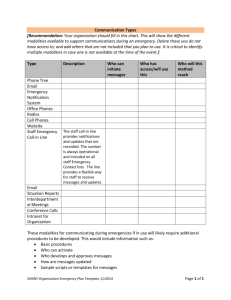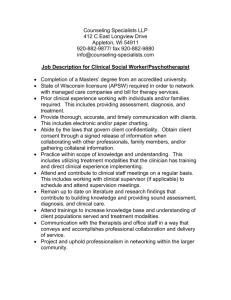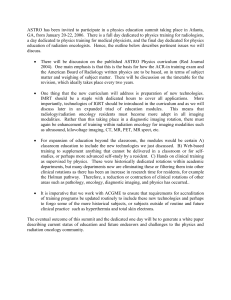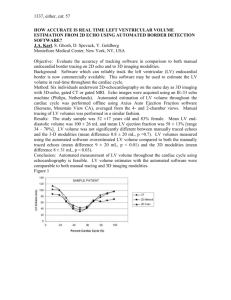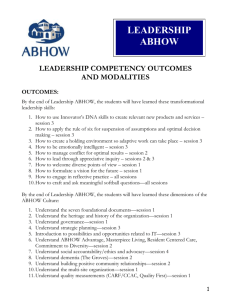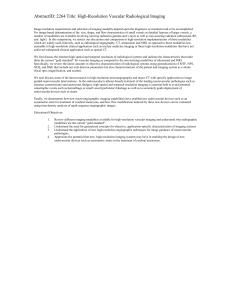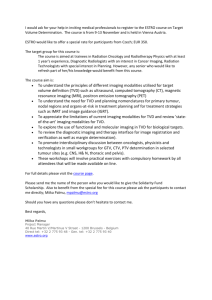AbstractID: 7213 Title: Image Fusion in Treatment Planning
advertisement
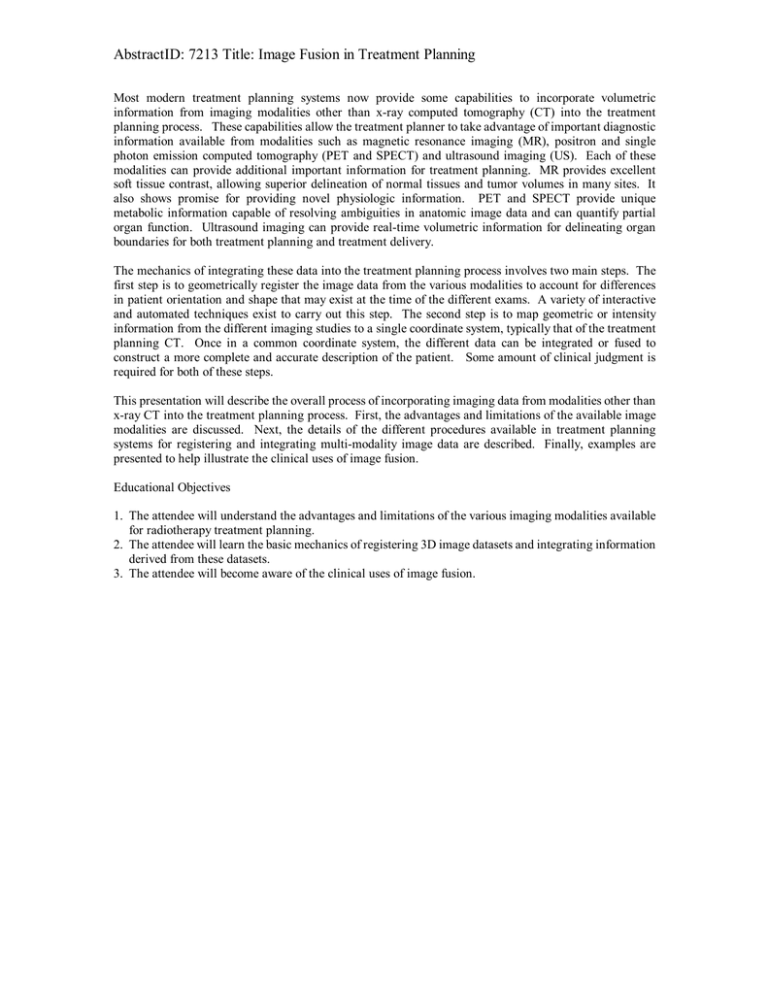
AbstractID: 7213 Title: Image Fusion in Treatment Planning Most modern treatment planning systems now provide some capabilities to incorporate volumetric information from imaging modalities other than x-ray computed tomography (CT) into the treatment planning process. These capabilities allow the treatment planner to take advantage of important diagnostic information available from modalities such as magnetic resonance imaging (MR), positron and single photon emission computed tomography (PET and SPECT) and ultrasound imaging (US). Each of these modalities can provide additional important information for treatment planning. MR provides excellent soft tissue contrast, allowing superior delineation of normal tissues and tumor volumes in many sites. It also shows promise for providing novel physiologic information. PET and SPECT provide unique metabolic information capable of resolving ambiguities in anatomic image data and can quantify partial organ function. Ultrasound imaging can provide real-time volumetric information for delineating organ boundaries for both treatment planning and treatment delivery. The mechanics of integrating these data into the treatment planning process involves two main steps. The first step is to geometrically register the image data from the various modalities to account for differences in patient orientation and shape that may exist at the time of the different exams. A variety of interactive and automated techniques exist to carry out this step. The second step is to map geometric or intensity information from the different imaging studies to a single coordinate system, typically that of the treatment planning CT. Once in a common coordinate system, the different data can be integrated or fused to construct a more complete and accurate description of the patient. Some amount of clinical judgment is required for both of these steps. This presentation will describe the overall process of incorporating imaging data from modalities other than x-ray CT into the treatment planning process. First, the advantages and limitations of the available image modalities are discussed. Next, the details of the different procedures available in treatment planning systems for registering and integrating multi-modality image data are described. Finally, examples are presented to help illustrate the clinical uses of image fusion. Educational Objectives 1. The attendee will understand the advantages and limitations of the various imaging modalities available for radiotherapy treatment planning. 2. The attendee will learn the basic mechanics of registering 3D image datasets and integrating information derived from these datasets. 3. The attendee will become aware of the clinical uses of image fusion.
